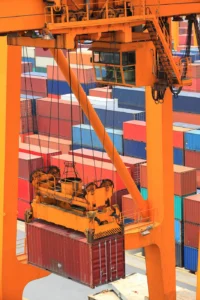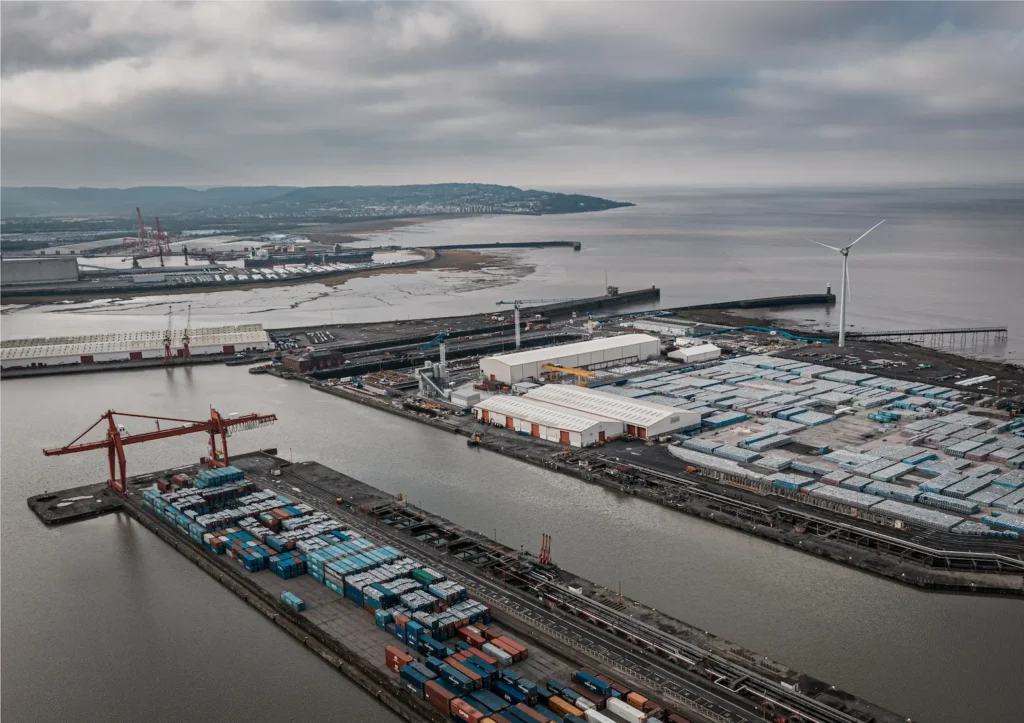December is undoubtedly one of the busiest months of the year for international trade. During the December logistics peak, as consumers prepare for Christmas and companies close their fiscal years, Spain’s ports experience a significant increase in maritime activity. More goods coming in and going out, more ships in rotation, and more critical operations that must be executed without room for error.
In this context, understanding what happens inside a port and how port operators, shipping agencies, and companies such as INTPS make it possible for everything to run safely, efficiently, and on time is key for any business that depends on international logistics. Although much of the process takes place out of sight of the customer, there is coordinated, technical, and rigorous work that underpins the entire operation.

The impact of the December logistics peak on ports
December brings together several factors that significantly increase maritime traffic:
- Christmas imports: electronics, toys, textiles, and high-consumption products.
- Accelerated deliveries: exporters and importers seek to close deals before the end of the year.
- Tighter berthing windows: ships need to enter and leave without delays.
- Greater pressure on customs, land transport, and warehouses.
To maintain flow without congestion, port logistics depends on meticulous coordination between shipping companies, consignees, stevedoring teams, port authorities, and logistics agents.
The ship’s arrival: coordination and shipping agency
The first step occurs even before the ship arrives at the port. Shipping agencies coordinate the arrival with:
Port authority
- Pilots
- Mooring crews
- Terminals
- Inspection services
- Tugboat companies
This ensures that the ship has an assigned berth, that resources are available, and that entry is smooth. Advance planning is essential during December, when every minute counts.
In addition, all preliminary documentation, mandatory notifications, and port calls are managed, reducing waiting times and avoiding cost overruns.

Mooring services, provisions, and crew support
Once in port, operations begin immediately. Operators coordinate essential services such as:
Mooring and unmooring of the vessel
- Supply of provisions and spare parts
- MARPOL waste management
- Crew care and relief
- Coordination of urgent repairs in port
During December, the speed with which these services are performed makes the difference between meeting or missing scheduled times, especially in complex weather conditions.
The heart of operations: loading and unloading
Loading and unloading is one of the most critical processes for avoiding congestion and delays in the delivery of goods. Coordination between loading teams, terminals, and operating schedules ensures that cargo handling is fast, safe, and on schedule, even with high container volumes.
Documentation, customs, and logistics coordination
December brings an increase in both customs processes and land distribution. Frequent delays are due to incomplete documents, incorrect tariff codes, excessive inspections, and regulatory changes. Therefore, advance document control facilitates clearance and avoids delays or additional costs.
Once the goods are released, logistics distribution begins immediately: road transport, temporary storage, consolidation and deconsolidation, and nationwide distribution. This comprehensive coordination ensures that cargo reaches its destination without the customer having to manage multiple intermediaries, even during peak demand months.
7. Why is INTPSS key during the December logistics peak?
The combination of maritime services, port logistics, shipping agency, and customs management makes INTPSS a comprehensive operator capable of maintaining fluidity at the most demanding time of the year.
Its main strengths in December include:
- High operational coordination between all parts of the port
- Advance planning of stopovers and document management
- Rapid response to unforeseen weather, technical, or administrative events
- Experience in high volumes of port traffic
- Global view of the logistics chain, from ship to warehouse
Thanks to this comprehensive approach, importers, exporters, and shipowners can operate with confidence during one of the most critical months of the calendar.
Conclusion: December is not a challenge, but a well-managed opportunity
Although December is a challenge for any port due to high activity, it also represents an opportunity to optimize processes and ensure that every operation is efficient and safe.
With proper preparation, coordination between maritime agencies, port operators, and logistics teams allows each port call and each container to move optimally and on time, transforming the logistics peak into a successful operation.

